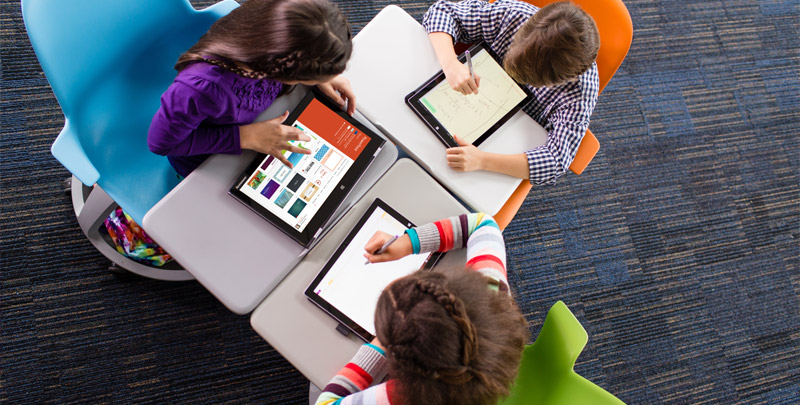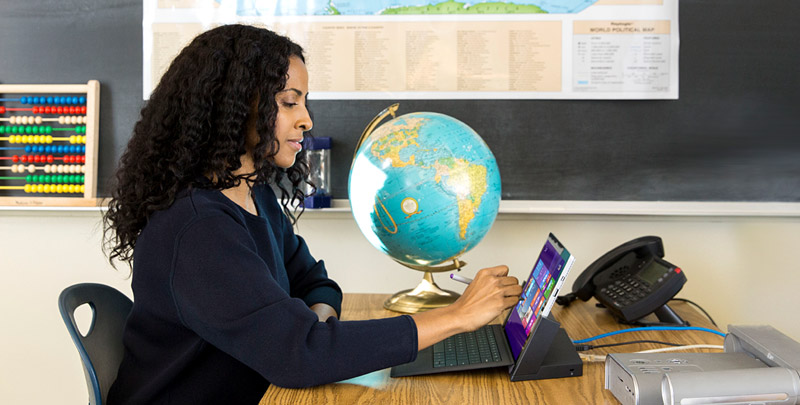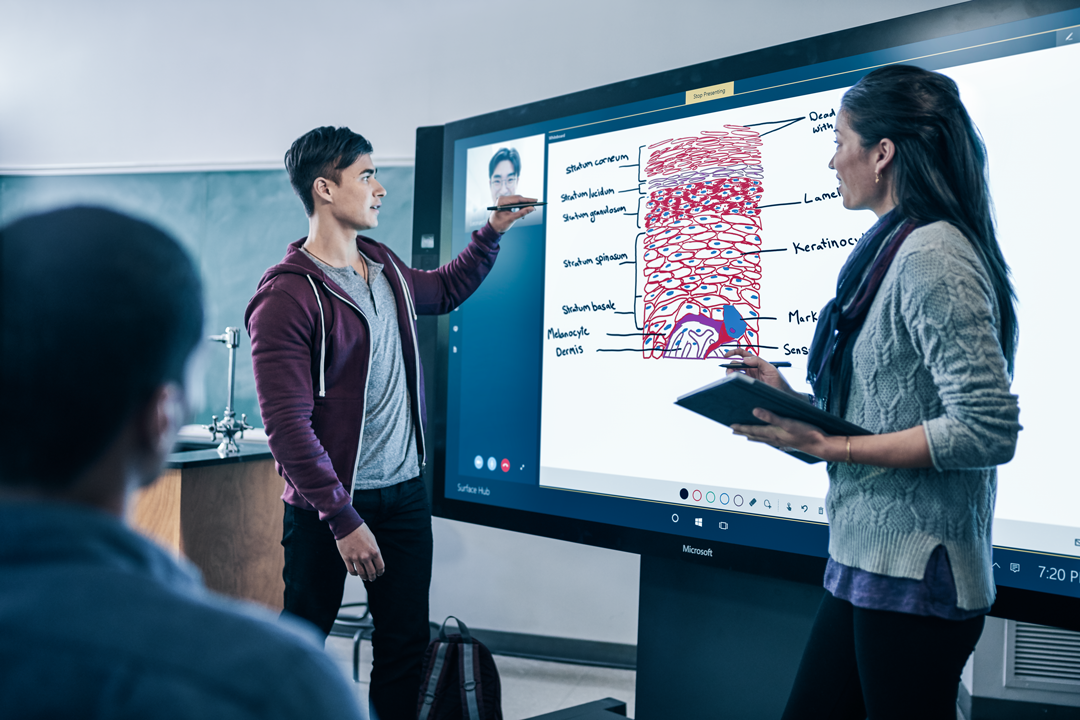A revolution is happening in education. The instigator? Technology.
Just as workforces around the world are being transformed by devices and the cloud, so too are our classrooms – from kindergarten all the way to university research labs.
In May 2017 in New York, Satya Nadella, Microsoft CEO, spoke about the transformative power of technology in education. He said that when used in the right way, digital transformation can address one of society’s most pressing challenges: democratizing educational opportunity.
Many schools see digital transformation as specific to the technology itself, but computers, electronic whiteboards and electronic books are only tools. To truly reap the benefits of digital transformation, schools and universities must recognise that students today learn differently than generations before them. Rather than replacing curriculum, technology can enhance it, leading to deeper student engagement and boosting important skills like creativity and collaboration that students will need in tomorrow’s workforce.
These skills are especially important in Europe, where there are expected to be 750,000 vacant jobs in the ICT sector by 2020 alone (The European Commission).
Keeping students engaged

One of the biggest challenges for teachers is keeping their classroom interested and engaged. In several European countries, including Ireland and Spain with classroom sizes larger than the global average (OECD), it can be difficult for teachers to monitor the huge number of factors that impact how well a student learns.
Just as a football manager can track individual players’ performance, teachers should also be able to track individual students’ learning performance. Harnessing the power of big data and analytics means a one-to-one approach becomes possible in a one-to-many environment.
Microsoft Azure, Microsoft’s enterprise-grade cloud computing platform, provides the processing power and analytics tools to make this possible. A Student Analytics solution can aggregate student data, including their attendance, participation in food programs, and other social factors that impact learning.
With Microsoft Azure Machine Learning, the solution can even predict shifts in learning behaviour before they happen. Teachers that are fully aware of each student’s situation can intervene early, and give students the assistance they need to overcome barriers to their learning.
This is especially important for schools with students with special educational needs like dyslexia, for example, who may require more support. To truly democratize education, it’s essential that these needs are identified and supported with the right technology.
At Holly Spring Elementary School in the U.S., Microsoft Learning Tools are empowering students of all abilities to read independently. The tool works by highlighting words in real-time as students read, making it easier for students to focus and improving reading comprehension.
With these kinds of technology, schools can provide better pastoral care for all of their students and, consequently, improve performance across the board.
Empowering educators

Just as work is no longer beholden to the office, learning is no longer restricted to the classroom. Schools are creating a learning community that stretches beyond the school grounds and support students and teachers wherever they are, whenever thanks to technology.
The Centro Integrado de Formación Profesional La Laboral in Gijon, Spain, is using Microsoft technology to ensure learning is accessible to all students. Web design classes use a blended learning environment to provide students with access to the resources they need, at any time, via Microsoft Sharepoint.
Teachers give lessons over Skype, recording each session for students to review later. With a more flexible schedule, students who work or have other responsibilities with work or family can learn at the time that suits them without impacting the quality of their studies.
Students use OneNote Class Notebook to collaborate on projects remotely, meaning teachers can access the OneNote and provide instant feedback, even if the student was unable to attend the class in person.
The digital collaboration tools of OneNote Class Notebook will soon be integrated into Microsoft Teams, a new tool that allows teachers to create a single digital hub for the classroom. Through Teams, teachers can manage project groups, distribute and grade assignments, bring in guest speakers and video content from the web, share materials and have threaded conversations in real time.
New tools like InTune for Education also make it easier and more affordable for schools to quickly set up and manage new hardware and Windows 10 devices, enabling educators to focus on teaching rather than technology.
Boosting academic research

For higher educational institutions focused on research, digital transformation provides the means to support influential, world-changing research. The Microsoft Cloud provides researchers with enterprise-grade data storage, computing capacity, collaboration tools and analytics, ensuring they can work with any combination of data sources quickly and accurately, across geographies, in a secure and real-time environment.
Through the Microsoft Azure for Research program, Microsoft grants free Azure storage and computing resources to ground-breaking research projects, such as the REACH initiative, led by the University of Oxford. It uses Azure Machine Learning to help improve access to safe water supplies in Africa and Asia.
A better future
Technology can empower the students of today to create the world of tomorrow. The students we equip with digital skills today will work in careers we haven’t even thought of yet, and build new technology that we can’t even begin to imagine. Educators, parents, and technology companies have a responsibility to provide them with the best education and tools possible to make this future a reality. Technology is the key to helping our students succeed, think creatively, and ultimately create a better world.
To find out how technology can empower students and educators, click here.




